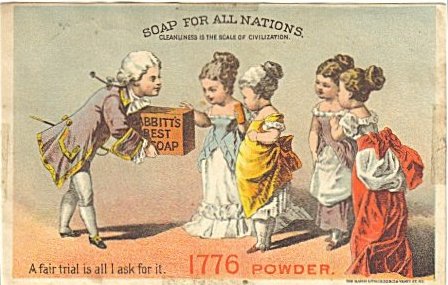8 Minute Reading
Loyalty programs are so common nowadays that we tend to assume they were always there. We have them in our favorite coffee shop, the website we use to book our next vacations, and even at our closest grocery shop but, unlike what one might expect, they are quite recent; especially if you take into account that paper money is at least eight centuries old, and so is the aim of having a steady income.
However, the word on the street stated by the New York Times is that – the first loyalty program appeared in 1793 when a Sudbury merchant had the idea of giving away copper tokens that customers could redeem later for merchandise. There is no way to know for sure if that date – 1793 – is correct or not. James J. Nagle published “Trading Stamps: A Long History” in 1971, where he narrates what he learned from William H. Preis, then senior vice president of the Grand Union Company. In that article, Nagle mentions that Preis had found that the origin of loyalty programs was in Sudbury, without further detail. And, since the New York Times said so, the date of 1793 has been used by every website that has published on the matter.
Despite the lack of hard evidence, there is reason to believe that Preis and Nagle’s claims are feasible because “hard times tokens” were frequently used in the United States between the XVIIIth and XIXth Centuries.
According to B. W. Barnard’s article “The Use of Private Tokens for Money in the United States,” the US territory lacked an adequate coin supply from the American Colonies until the nineteenth century and, since need is the mother of invention, tokens appeared to fill that void as early as 1681.
Tokens, as Barnard explains, are “a medium of exchange unauthorized by law and issued by private individuals or concerns, which comes to be recognized as a sort of money and practically serves that purpose.” Because of the lack of change, people began to manufacture their own copper or tin tokens and use them for commercial purposes. Even if they were at the risk of being fined or imprisoned, if the community accepted them, they were better than not having any kind of money at all.
One interesting example that Barnard mentions is that of John Higley, who, according to Barnard, was America’s first coiner of copper money. The story has it that Higley’s copper tokens had the legend “The value of three pence” and allowed him to make a comfortable living. However, he seems to have used them so heavily that objections were made to accepting their value, and he had to change the legend for “VALUE ME AS YOU PLEASE – I AM GOOD COPPER.”
The practice was so extended that the states of Pennsylvania, Connecticut, and New Jersey passed laws forbidding the circulation of coins not expressly authorized. The problem continued – Barnard explains – until the establishment of the United States Mint in 1792, when the institution took charge of issuing the country’s coins.
Now, do you remember the year the New York Times mentioned as the birthdate of Loyalty Programs? 1793, so it’s not impossible that this Sudbury merchant took the copper tokens he had and decided to re-purpose them, now that he couldn’t use them as money. Instead of using them as currency, he gave them a different kind of value, creating a system in which loyal customers could exchange them for merchandise.
This idea of using an object of symbolic value that customers could collect and exchange so businesses could build a group of recurrent buyers is at the heart of loyalty programs. So, whether it was in 1793 or not, the idea that this was the birth of this mechanism is entirely reasonable.
Now let’s go to the first Loyalty Program of which we have hard evidence. Please meet the godfather of modern loyalty programs, Benjamin Talbot Babbitt.
According to the Babbitt’s family records, B. T. Babbitt was born in 1809 and began working at a young age, first at the family farm and, later, as a wheelwright, machinist, and file maker. As the family history has it, he learned chemistry from a Clinton College professor who occasionally visited the workshop. His ingenuity and knowledge of chemistry and mechanics allowed him to create over one hundred inventions, including one of America’s first mowing machines. Nevertheless, the invention that made the difference for him was his “baking soda” formula. Later, he also began selling all kinds of soap that he packaged attractively, branded as a high-quality product, and advertised nation-wise.

On top of those intense marketing efforts, Babbitt created its Loyalty Program in 1850 by inviting customers to cut the trademarks of his Best Soap and 1776 Soap Powder and mail them back. In exchange for a certain number of trademarks, customers had access to an excellent rewards catalog, ranging from a gentleman’s handkerchief or a harmonica for 25 trademarks to a woman’s gold watch for 1550 trademarks. If you are curious, here is the full 1907 catalog.
I can imagine hundreds of people saving those trademarks inspired by the variety of rewards. If you were a child, the idea of getting a harmonica might move you to ask your mother to keep the soap trademarks for some months. Still, if you had the dream of owning a solid gold ring, then you might continue buying Babbitt’s soap for years on a row until you collected the 350 necessary trademarks to claim one.
According to Philip Shelper’s research, Babbitt didn’t limit his loyalty program to a mailing dynamic but also opened premium stores in major cities across the US, Canada, Puerto Rico, and Scotland(!) where customers could redeem trademarks as well.
What is most surprising about his loyalty program is that it already included the majority of modern loyalty programs characteristics (except for gamification). But he did manage to become closer to his customers by linking his products to those objects they desired; he built a user database because every time you mail something, you need to write who is the sender; his catalog served him as an effective mean of communication, increased sales (for decades), and increased customer satisfaction through the rewards and premium store-experiences.
Do you know of any loyalty program previous to B.T. Babbitt’s? What do you think is the biggest development loyalty programs have had since Babbitt’s time? Please share in the comments!
Business Trends – HAVE YOU EVER WONDER WHERE LOYALTY PROGRAMS CAME FROM?
By: Ana Maria Enciso, June 2021
Edited by: Isabela Rosa

Leave a Reply